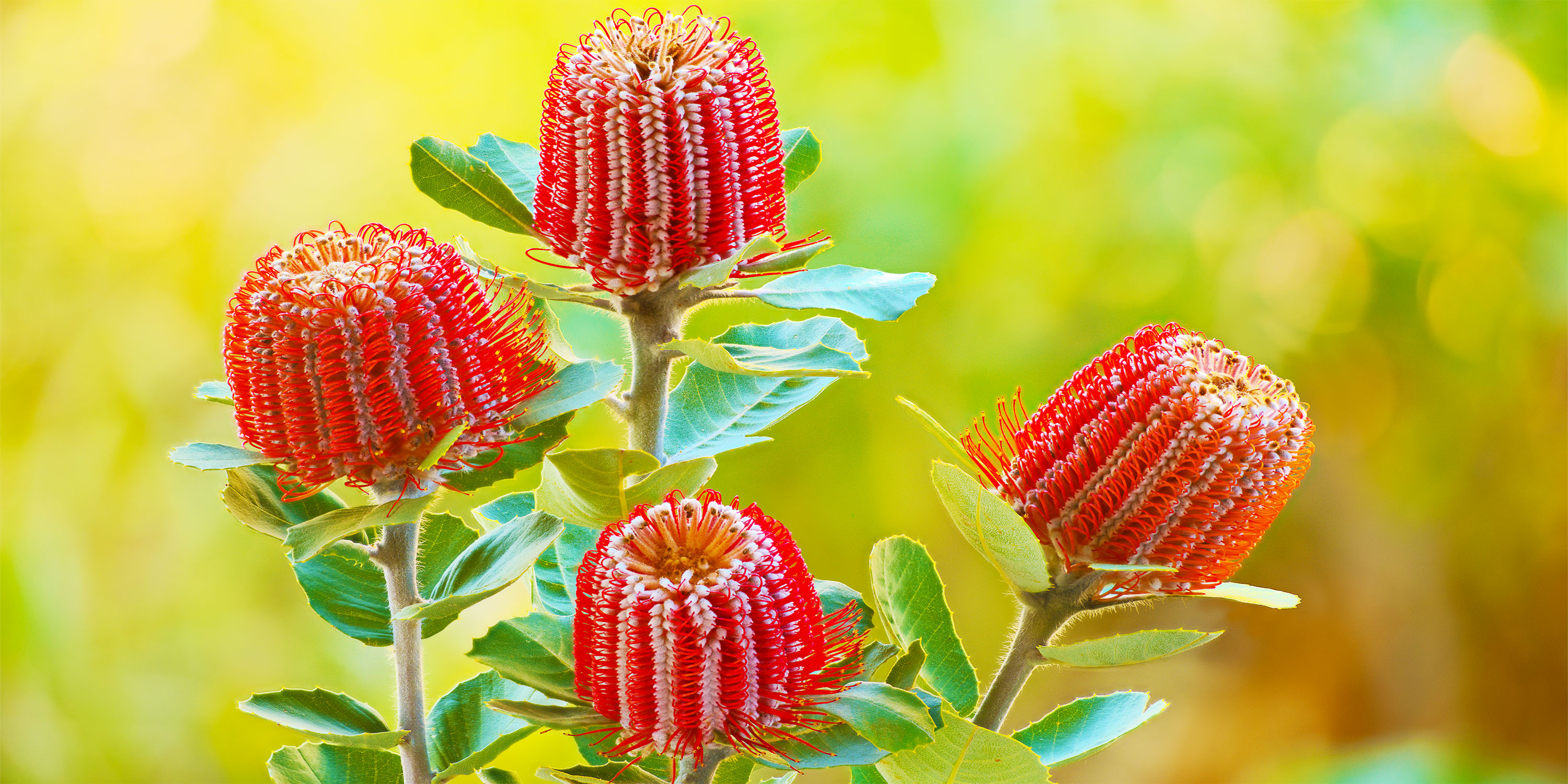PlantSnap Photos of the Week 2020

Banksia coccinea -- scarlet banksia
Banksia coccinea — scarlet banksia
Banksia coccinea, known by commons names such as the scarlet banksia, waratah banksia or Albany banksia, is an erect shrub or small tree in the family Proteaceae.
Scarlet banksia are found in the wild along the south west coast of Western Australia, from Denmark to the Stokes National Park, and north to the Stirling Range, growing on white or grey sand in shrubland, heath or open woodland. Reaching up to 8 m (26 ft) in height, it is a single-stemmed plant that has oblong leaves, which are 3–9 cm (1.2–3.5 in) long and 2–7 cm (0.8–2.8 in) wide.
The prominent red and white flower spikes appear mainly in the spring. As they age they develop small follicles that store seeds until opened by fire. Though widely occurring, it is highly sensitive to dieback and large populations of plants have succumbed to the disease.
The scarlet banksia grows as an erect shrub or small tree, generally around 2–4 m (6.6–13.1 ft) tall, with little lateral spread. However, it can reach 8 meters (26 ft) in height, particularly in the vicinity of Albany.
The trunk is generally single at the base before branching, and covered with smooth grey bark that is 2–5 mm (0.079–0.197 in) thick and lacking in lenticels.
Normally peaking in the summer months, the pinkish-brown new growth is densely hairy. The oblong, cordate or obcordate leaves are 3–9 cm (1.2–3.5 in) long and 2–7 cm (0.8–2.8 in) wide, with 3–5 mm (0.12–0.20 in) long petioles. Truncate at the apex, they have dentate margins with small (1–3 mm long) teeth 3–18 mm (0.12–0.71 in) apart, separated by shallow u- or v-shaped sinuses.
The upper surface is covered in fine fur when young and becomes smooth with age, while the undersurface is covered with white fur, particularly along the midrib.
The process of flowering takes 9–12 months; the stems begin developing microscopically in spring, with no visible evidence of flower spike development for around five months before the buds actually appear.
Flower spikes are in bloom from May to December or January, peaking between July and October.











